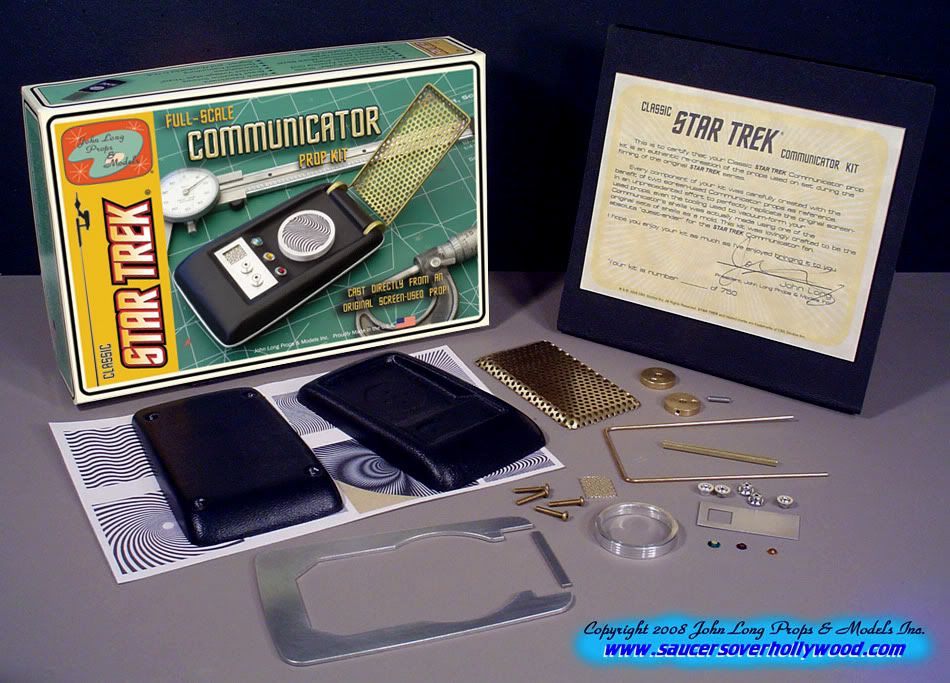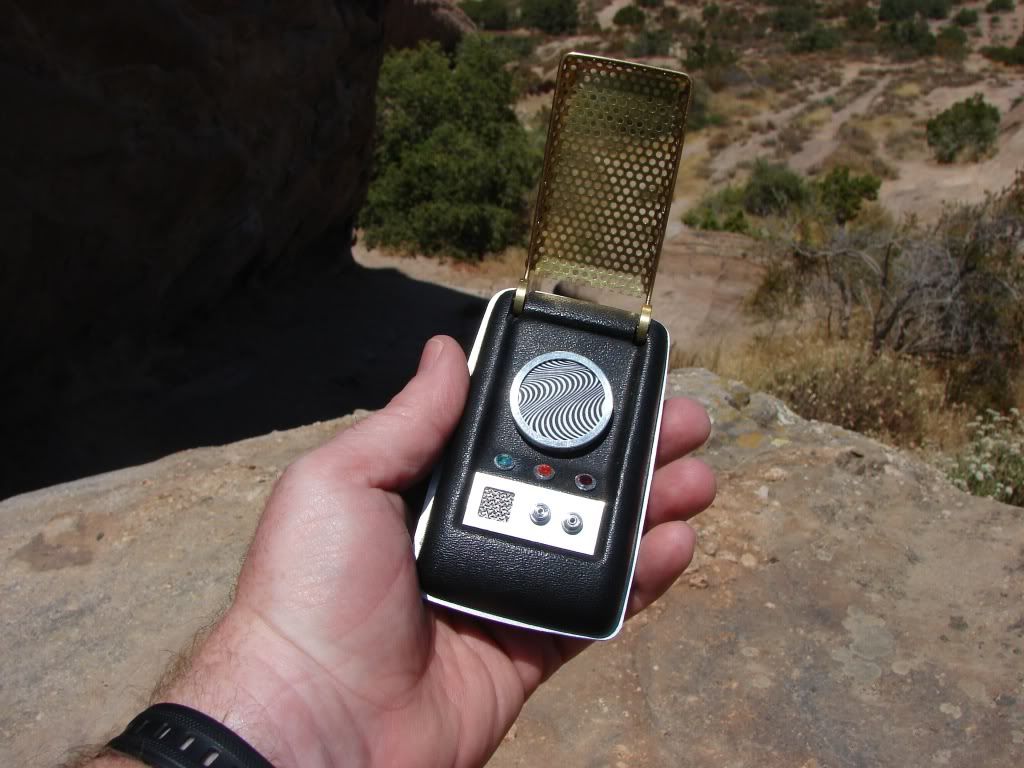With it's shiny gold and black colors and curved, almost organic shape, the TOS communicator is a thing of timeless beauty. If you haven't seen this
http://herocomm.com/
...it's a fantastic and comprehensive look at the original props. Especially intriguing: what became of the missing ones?
Oddly, they don't seem to say anything about the alarming incident in "The Gamesters of Triskellion," in which Shatner rolled over on a communicator and bent its antenna. I've always wondered whether it was successfully repaired.
http://herocomm.com/
...it's a fantastic and comprehensive look at the original props. Especially intriguing: what became of the missing ones?
Oddly, they don't seem to say anything about the alarming incident in "The Gamesters of Triskellion," in which Shatner rolled over on a communicator and bent its antenna. I've always wondered whether it was successfully repaired.







